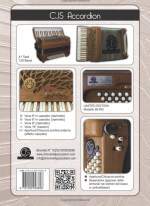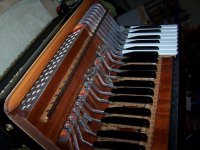Hi all.
As my mind drifts thinking about accordion voices, one thing I notice is that you don't see the combination of two wet MM reeds in cassotto.
Has anyone actually tried it/heard it? Is there a good reason why nobody ever does this? Plenty of double cassotto boxes, but never with chambered MM+, so there's got to be good reasons for it, right?
As my mind drifts thinking about accordion voices, one thing I notice is that you don't see the combination of two wet MM reeds in cassotto.
Has anyone actually tried it/heard it? Is there a good reason why nobody ever does this? Plenty of double cassotto boxes, but never with chambered MM+, so there's got to be good reasons for it, right?




